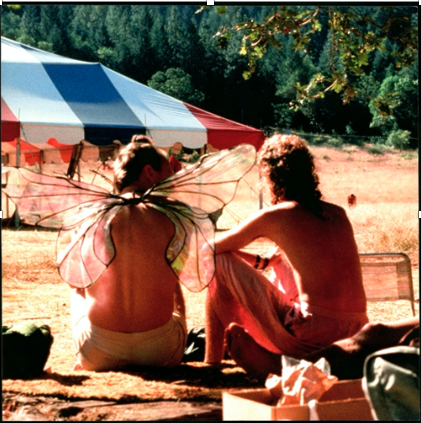
Labor Day weekend 2019 marked the 40th anniversary of the birth of the Radical Faeries, an international gay-centered consciousness and spirituality movement, brimming with social change/social justice possibilities, that came out of Los Angeles. Today its original raison d’être is even more relevant to gay/queer men than in 1979 when the Radical Faeries were founded.
In June 1979, after a year and a half of dialoguing and planning, Harry Hay, founder in 1950 of the historically important and groundbreaking Mattachine Society in L.A., and I, an early Gay Liberationist and in 1970 co-founder of the pioneering L.A. Gay Community Services Center (now the LA LGBT Center), started mailing out a leaflet in hand-addressed, hand-stamped envelopes that called the Radical Faeries into being.
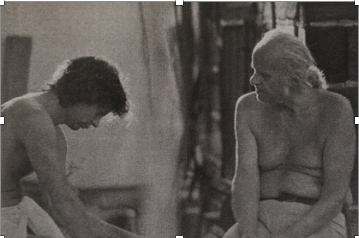
In penetrating discussions between Hay and me sitting along the Rio Grande adjacent to the San Juan Pueblo in New Mexico where Hay was living at the time, and by telephone with me bouncing between a bed in a hay barn in rural Oregon and Los Angeles, the “idea stage” of the Radical Faeries was seeded and incubated in 1978 and early 1979.
The word “faerie” (or “fairy”), magical creatures found globally, was reclaimed and reimagined. It had been a name used with hatred and humiliation by hetero supremacists against gay men. The word “radical” was utilized both in its Latin root meaning, something that has depth to it, as well as its current sociopolitical connotation of something new and daring.
After looking for the right location for the first gathering for over a year, very late in April 1979 we decided on the Sri Ram Ashram in the Sonoran desert of Arizona, headed by Swami Dayanand (Bill Haines), a gay man. Then the actual “manifestation-of-the-idea stage” took place between May and August 1979.
Impossibly, the gathering was scheduled to occur over the Labor Day weekend, ten weeks after we began mailing out “A Call to Gay Brothers,” to meet together in a very remote, hard-to-get-to spot in the sweltering Arizona desert about 46 miles east of Tucson. Hay and I thought we would be extremely lucky if 25-50 gay men showed up.
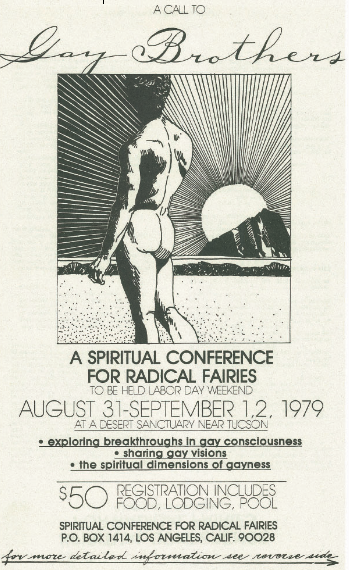
Amazingly, 220 men from all over North America found their way to that out-of-the-way spot in the desert. That Labor Day weekend the Radical Faeries were born.
There was no rigid, preplanned structure built into the gathering. The content was primarily allowed to emerge from the participants. For three exciting, inspiring, and growing-edge days, we shared our gifts and talents with each other.
Multilogues were conducted about who we are as gay men, our purpose in society and whom we have always been. Faerie circle workshops were convened on a wide variety of topics important to gay/queer men at the time. Sacred ceremonies were conducted honoring ancestors, the gathering, and our personal and societal change intentions. A different model for gay community organizing was put forth that included issues of identity, purpose, race, and class. Meals were prepared for each other on a cooperative and rotating basis. And love and lust blossomed under awesomely beautiful desert night stars.
Just as everyone was departing the gathering, with loaves of bread baked for their journey home, as a sign of what was to come, a double rainbow suddenly appeared directly over the spot where we had been meeting.
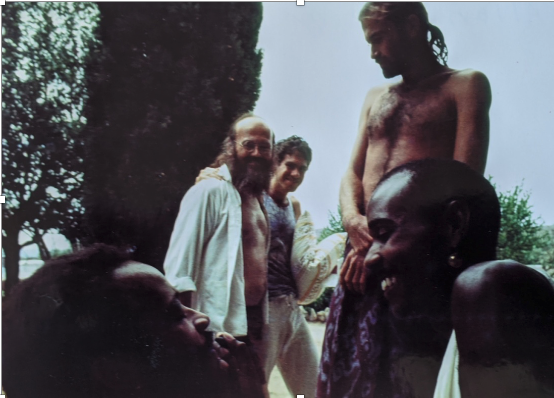
Like dandelion seeds blown by the winds of fate, those 220 gay men spontaneously started Radical Faerie gatherings, large and small, in cities, towns, and rural areas across the U.S. and Canada and eventually globally.
Hay and I deliberately wanted the Radical Faeries to be grassroots and decentralized with each gaggle of faeries being independent and determining its own personality and form while at the same time united in a web of gay brotherhood and exploration of gay consciousness and spirit.
The front side of the original 1979 leaflet inviting gay men to gather in the desert stated our intentions clearly—(1) “exploring breakthroughs in gay consciousness,” (2) “sharing gay visions,” (3) manifesting “the spiritual dimension of gayness.”
Along with the Gay Liberation movement itself and the AIDS Quilt, the Radical Faeries represent a unique, historic and classic example of gay/queer community-based, grassroots organizing. There was no public or private funding. There were no corporate sponsors. There were no CEO’s.
Forty years later the Radical Faeries are alive and well with gatherings of varying size around the world. Three residential Faery Sanctuaries exist in rural areas of the U.S.—Wolf Creek, Ore. (www.nomenus.org), Zuni Mt., Ariz. (www.zms.org), and Short Mt., Tenn. (615-563-4397)—and in France (www.folleterre.org) and Australia (www.ozfaeries.com).
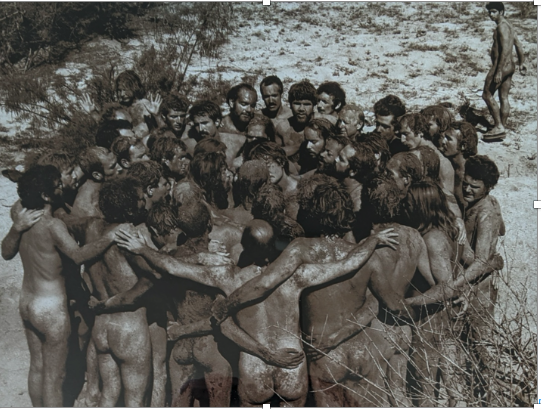
In 2017, the Albion Faeries in England held a sold-out, global Radical Faerie gathering, in a castle no less, with particular outreach to Faeries in the eastern Mediterranean area and Middle East. In early August 2019 a Great Faerie Circle was convened at the residential Faerie Sanctuary at Folleterre in eastern France. And in the southern hemisphere, a Summer Solstice Radical Faerie gathering recently had to be canceled at Ozland, a residential Faeries Sanctuary in Australia, due to catastrophic rural fires there.
For anyone interested in this fascinating grassroots history, see my essay “The Birth of the Radical Faeries” in “The Gay and Lesbian Review Worldwide” (September-October, 2010) or contact me at [email protected].
Why Were the Radical Faeries Called Into Being?
During the 1970’s, in the aftermath of the 1969 Stonewall Rebellion, the burgeoning, grassroots Gay Liberation movement had created a small clearing in the forest of hetero supremacy. Gay and lesbian people at long last, and for the first time, had a collective window of opportunity to move beyond individual, isolated survival. A courageous handful rose to the challenge, going through that window, changing the gay narrative from oppression to liberation.
Gay and lesbian people created, largely from scratch, visible and organized communities, institutions, media, cultural venues, healthy sexual identities, and engaged in intellectual and artistic explorations, proactive organizing, and direct and militant political action—an amazing political and cultural achievement.
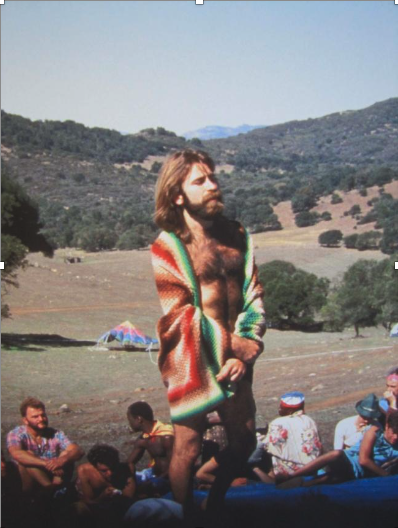
By the late 1970’s, however, in the dialogues between us, both Hay and I sensed that gay people were beginning to lose their way again. The historic window of opportunity available to us as a people as a consequence of Stonewall was beginning to be irresponsibly squandered by a gradual drift toward respectability politics with its mindless assimilation and shallow conformity.
After Stonewall, the use of the words “gay” + “liberation” meant something much larger than the words “homosexual” or “homophile” that went before. By the late 1970’s, however, the possibility of creating a new, gay-derived and gay-defined identity was beginning to fade.
Our very being continued to be reduced to the oppressive idea that gay identity was nothing more than same-sex sexual behavior and relationship—just like heteros but with a sexual twist. In the process, this reductionism perpetuated a self-denying and self-limiting identity which gay people had internalized over centuries of hetero supremacist ideology, propaganda, and intellectual and physical genocide, “genocide” as defined by the United Nations, a genocide still happening throughout much of the world.
The Reagan Revolution of the 1980’s and beyond moved the political and social environment toward the extreme conservative, right side of the pendulum swing with a concomitant shift of gay community zeitgeist and leadership in that conservative political direction as well.
Therefore, in the 1980’s and beyond a whole generation of gay and lesbian people were beginning to be shaped more by the values of the Reagan Revolution rather than by the anti-Vietnam war/black civil rights/social change/social justice/feminist revolutions of the 1960’s and 1970’s which seeded and incubated the birth of the Gay Liberation movement.
Today we still live with the results of that pendulum swing with a stagnant, status quo political condition in the LGBTQ community where race and class are rarely part of the discussion, where leadership is often equated with owning property, elite education and wealth, and in which gay and lesbian people generally find themselves in a unimaginative, assimilationist cultural milieu, driven around the clock by the surveillance capitalism/militarism/entertainment/ consumerism superstructure of American society at this time.
Do you really think “Queer Eye” cotton-candy is important to the evolution of gay/queer political and existential consciousness and the forward movement of the community?
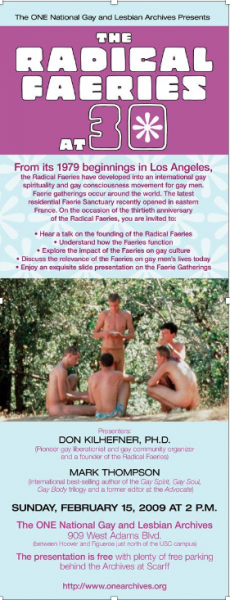
University of Southern California in 2009
The Radical Faeries were called into being as an antidote to the unexamined assumption underlying the gay assimilation/sexual orientation model of identity that permeates the LGBTQ community today. It is an identity that says gay people are just a sex act with relational overtones, otherwise just like heteros—a model that a future generation of gay/queer people will be rebelling against, if, indeed, it is not already happening.
What Characterizes the Radical Faeries?
Each Radical Faerie circle and gathering is different depending on personalities and location. During the past 40 years, however, I have observed certain patterns which, to a greater or lesser extent, represent continuity with the 1979 “A Call to Gay Brothers” for the first gathering.
The Radical Faeries are gay-centered, understanding that gay reality is important, substantial, and purposeful. This means that our identity starts with “us” not “them.” At the same time it is larger than “us” and “them” polarities—more like yin and yang wholeness, complimenting and supplementing each other.
Radical Faeries are adversarial to systemic gay dehumanization by the pervasive ideology of hetero supremacy, but not heterosexuals per se. Multitudes of politically and spiritually aware heteros have been our allies and comrades on the frontlines long before most homosexuals could even utter the words “gay freedom.”
There is a further budding understanding that being gay/queer constitutes a significant evolutionary and social purpose much, much greater than the sexual orientation identity to which our hetero oppressors have shackled gay/queer people.
Initially, much of that systematic understanding came out of Gay Voices and Visions workshops I originated/facilitated in Los Angeles between 1976 and 1981, which to a significant extent laid the intellectual foundation for the early Radical Faeries.
These workshops examined important gay visionary and intellectual personages—Walt Whitman, Edward Carpenter, Karl Heinrich Ulrichs, Gerald Heard, and Harry Hay among many others. Their writings over the past 150 years in Western culture were read and placed in a contemporary Gay Liberation context. Gay history, poetry, and growing-edge writings out of evolutionary biology and sociobiology were also included.
The Gay Voices and Visions workshops represented an innovative type of gay-centered consciousness-raising group aimed at revisioning what it means to be gay/queer.
Soon after the first gathering, academics began calling the Radical Faeries’ approach “gay essentialism,” meaning there is something basic and essential about what gay people are contributing to society that contributes to the evolution of our species as opposed to sexual orientation and assimilation. Hay often quipped that gay people are just like heteros in what we do in bed but in all other ways are different.
As an aside, let me suggest that the waters of gay ontology (“ontology” = the study of being) get muddied and muddled by the academically-influential French sociologist Michel Foucault, a gay man, who contends being gay has had no enduring meaning or role over the millennia and means only what any culture at any given time decides how to define us.
Adding to the fog of Foucault’s fuzzy thinking and denial of gay evolutionary purpose is the university-based “queer theory” paradigm of literary criticism advocated by Judith Butler which basically says any marginalized person living/creating at the edge of the village—gay or straight—is queer, further diluting gay-centered explorations of identity and reality.
Also, while it is beyond the focus of this essay but in the realm of gay ontology, mention must be made of the idea of “ontology resistance” by Franz Fanon (“The Wretched of the Earth” and “Black Skin, White Masks”) who wrote within the context of the white supremacy inherent in European imperialism in Algeria, in particular, and Africa, in general. In brief, ontological resistance says a colonized people will slavishly emulate the thinking and behavior of their masters and oppressors and resist exploring the positive attributes of their own indigenous values and society.
Placing Fanon’s critical thinking in a gay/queer historical context, gay minds have been colonized through centuries of hetero ideas of superiority and the concomitant inculcating of gay inferiority so that gay people today want to assimilate into that “superior” straight culture and resist, and, perhaps, fear, exploring an identity free of their oppressor’s definition of who gay people are.
The Radical Faeries represent a gay essentialism/social contribution model of gay identity with a distinguished intellectual history and real potential for changing individuals and society as well as healing the wounds and scars of countless generations of violence against gay/queer people.
The Radical Faeries have always been grassroots in their orientation. There is no Faerie Pope issuing encyclicals about right behavior and thought or Central Committee defining the zig and zag of political correctness. A Radical Faeries circle or regional gathering happens because a person or persons organizes them.
The Radical Faeries are generally politically progressive. They work to develop a larger political and social consciousness and conscience in the gay/queer community and in society generally. There is support for liberation movements of women and men, people of color, working people, and ordinary people like ourselves. Electoral politics are largely supported where there is honesty, imagination and substance—the word “radical” in the name has political meaning.
The Radical Faeries value community-building. It has been the creation of a gay and lesbian community in the 1970’s, which evolved into a LGBTQ community, that has made the pivotal difference in our advancement as a people. At the root of the word “community” is right behavior based on assuming responsibility for each other.
Today that word—“community”—has become hollow, a shibboleth, used by many LGBTQ politicians and leaders when it can be employed to manipulate, just like politicians in D.C. do with the word “patriotism” and American flag pins. To which a Radical Faeries sense of real community is an antidote.
Radical Faeries gatherings represent in many ways the kind of healthy values and transformed consciousness that we are working to instill in the larger gay/queer community—the kind of community we desire to live in.
Such communities are characterized as being visibly and openly gay/queer in the widest possible meaning of those words and their underlying mystery. Valuing the gifts of each person and weaving those gifts into the fabric of community life. Feeding each other literally and spiritually. Recognizing that a healthy community honors ancestors, requires elders, depends on adults, and invites youth. Acknowledging and assuming our responsibility not only to the gay/queer community but to the larger community of beings—human and otherwise. Performing the necessary rituals and ceremonies that keep a community healthy and sane. Valuing kindness and generosity over hoarding and selfishness. Being culturally aware, imaginably engaged, and creatively expressive. And dancing, clothing optional, in the moonlight.
Now More than Ever
In 2020, five decades after the Stonewall Rebellion and four decades after the Radical Faeries came into being, the Radical Faeries are even more relevant now than ever before. From the vantage point of over 50 years of intelligent, continuous, active, frontlines gay/queer community organizing in Los Angeles, a place which probably reflects gay/queer United States largely but not entirely, this is what I see and experience.
The continuity of gay and lesbian radical history has been derailed or co-opted by a contemporary corporate mindset that dictates parameters and content, what young gay/queer men refer to as rainbow capitalism.
As a particularly egregious and galling example, the 2019 West Hollywood Pride celebration, which masquerades as L.A. Pride, occurred without ever mentioning in any way the 1969 Stonewall Rebellion, the most important event in American gay history, on its 50th anniversary. In stark contrast, a U.S. president (Obama) lauded Stonewall in a State of the Union address. The rainbow capitalism of contemporary Pride dare not speak Stonewall’s name in L.A. even though that 1969 insurrection was the very occasion for Pride’s birth in 1970.
The “Reclaim Pride” effort in New York City in June 2019 was historically important in this regard. Gay assimilation and rainbow capitalism try to erase gay revolutionary history. Radical Faeries honor it.
As another example of the impact of rainbow capitalism, the LGBTQ media across the country has run ads urging gay people to “Show your Pride!” by securing a rainbow Bank of America credit card. The German social philosopher Herbert Marcuse (Angela Davis’ mentor) argued that in contemporary society any movement that has the possibility of changing the economic/political structure of society will be quickly co-opted by ruling corporate/financial institutions (e.g., B of A), exactly what has been happening to the LGBTQ movement.
A younger gay/queer generation appears to be connecting to the revolutionary intent and compassionate idealism of the Radical Faeries albeit in the ways and cultural language of their generation, as it should be.
A mother in New York City recently remarked about her 19-year old gay son, “He’s really into the Radical Faeries.” Such reports reach me often these days. I ask, what is missing today from mainstream, main street, assimilationist, sexual orientation LGBTQ community and culture that is not nourishing our souls, particularly those of our young?
While game-changing progress has clearly been made by the LGBTQ community in Western society during the past 50 years, hetero supremacy, like white and male supremacy, still overtly and covertly reigns throughout the country and in deadly and destructive ways for gay people in particular throughout the world (See my essay “It’s Time To Bury The Word Homophobia”).
This deadly violence against LGBTQ people globally hardly registers with most self-satisfied, self-absorbed, self-curated gay/queer people in the U.S. As one of countless examples, in Brazil, robbery, often associated with survival, is rampant. It has been reported that if the robbery happens to a gay man, often he is locked in the trunk and his car set on fire.
Since the Radical Faeries are international in scope, there tends to be a greater sensitivity to and awareness of gay oppression and hetero violence that is global and a potential to act that is international in scale.
I ask, is it possible to be engaged in supporting and encouraging gay/queer liberation movements around the world and at the same time be zombied-out, like the living dead, around the clock by mass entertainment on one screen or another?
In the 19th century Karl Marx referred to religion as the opiate of the masses. Today, 24/7-entertainment has replaced religion as the mass opiate, often lulling people into sleep and inaction.
In the gay/queer community in the United States today, the dominant political paradigm is the oppressive, hetero-derived gay assimilation/sexual orientation model of identity. It mindlessly rules supreme with reductionist ideas and banal consequences. The New York Times columnist Frank Bruni, a gay man, said it succinctly recently when he asked, “To what extent am I defined by my sexual orientation or gender identity? What does or doesn’t it tell you about me?” To which the essentialist/social contribution model of identity, that the Radical Faeries and others are birthing, is a progressive queer antidote. (See my essay “Gay Identity: Is The Tail Wagging The Dog?,” Malidoma Some interview, “Gay People Who Are You Really?,” TED Talk, “Being Gay. It’s About Survival Not Sex”.
Today the egalitarian, militant, proactive, and imaginative grassroots gay community has been turned upside-down.
Today a class- and race-based hierarchical leadership built on wealth, ownership, conformity, shrinking gay-centered imagination, self-curated celebrity and their concomitant values—in truth, the values of the Reagan Revolution and post-Reagan era—dominate the zeitgeist and leadership of the community. To which the Radical Faeries, knowing that wealth and white skin do not determine your value, are a progressive gay/queer antidote.
Just like the women’s liberation movement has gone through several stages with different tasks since the initial 1848 Seneca Falls conference, the next stage of the struggle of gay/queer men against hetero superiority has a task of exploring and manifesting a true revolution in gay consciousness and identity.
It is what motivated Hay and me in sending out “A Call to Gay Brothers” in 1979. And now that work is passed on to a new generation of gay/queer men. It is not about regressively going back in time. Instead, a new generation must take what previous generations of LGBTQ people have miraculously created and continue creating and moving it forward. Our survival and evolution depends on it.
Reacting to the current stagnant, low level state of affairs, a smart, young lesbian recently defiantly exclaimed, “I don’t even know what the gay community is about anymore. What’s the tagline?”
* * *
An Afterword
The Roman historian Tacitus wrote, “Success has many fathers but failure is an orphan.” Several erroneous claims have been put forth about who founded the Radical Faeries. One person even ignorantly wrote that the Radical Faeries have no founders, they just randomly happened.
The names Mitch Walker and John Burnside are sometimes claimed to be co-founders with Hay and myself. This is not true.
As I explained in my The Gay and Lesbian Review article on organizing the first gathering, after securing the ashram in the Sonoran desert, Hay, Burnside and I continued on to my L.A. apartment in Hollywood/West Hollywood where we met Walker from Oakland who wanted to help with the organizing.
On May 1, 1979, Mark Thompson from The Advocate also came to my home to interview Hay on the occasion of the 10th anniversary of Stonewall, at which time he was informed of the upcoming gathering. After the leaflet, his article was the second way the word got disseminated. Thompson left immediately after the interview to return to San Francisco and erroneously reported the four of us were organizing the first gathering.
On the first day of organizing, Hay and Walker went for a walk after breakfast and Hay came storming back furious followed shortly by Walker who wanted the gathering postponed because “the time wasn’t right”—meaning he was not in control. Walker immediately returned to Oakland, saying, as he angrily walked out my apartment, “I wash my hands” of the whole effort. Walker did attend the first gathering. Later, he also falsely declared himself as the “spiritual director” of the first gathering. Radical Faeries do not have spiritual directors.
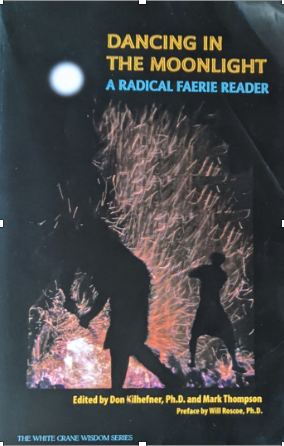
John Burnside, Hay’s long-time companion, is a completely different matter. In the year and a half leading up to the first gathering all the discussion about the Radical Faeries idea was between Hay and me. Prior to the Sonoran conclave, Burnside was more like a benign presence as Hay’s companion. He periodically, in a scatter-shot manner, would sit in on meetings because he was there. It was not until Burnside experienced the first gathering that he fully understood what Hay and I were up to.
Virtually all the nuts-and-bolts work that made the gathering happen was done by Hay and me cooperatively. In the week before the gathering a group coalesced at the ashram to help prepare the site, secure provisions, and bake bread composed largely of participants of the L.A. Radical Faerie Circle, the first such Circle, graduates of my Gay Voices and Visions consciousness-raising groups.
The leaflet announcing the gathering went out clearly under Hay’s and my names alone since we conceived and organized the event. Other claims lack moral integrity and historical honesty. I would have no problem whatsoever citing other names if it were true. I know the truth because I was there and central to every step in its organizing.
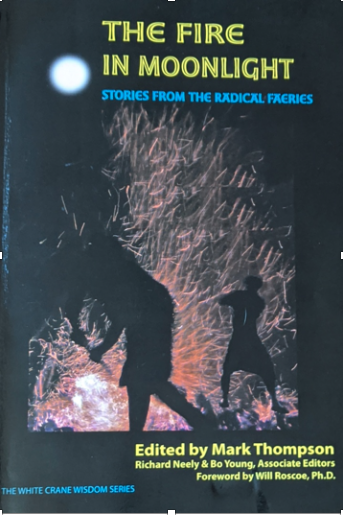
Finally, this essay does not want to overly-romanticize the Radical Faeries since many also have a less idealistic shadow side as do all individuals, organizations and nations. From time to time a grandiose, narcissistically inclined Faerie might appear but then he would largely be ignored, disappear or deflate. Sometimes Radical Faeries do not live up to the real possibilities and revolutionary intentions inherent in their call into being.
Let me give you a prime example. In 2009 I decided to create a much- needed book sub-titled “A Radical Faerie Reader” to chronicle the meaning of the Radical Faeries experientially since 1979 and inspire a new generation. I sent out a wide call for articles and invited journalist and long-time friend Mark Thompson to join me as co-editor.
In 2009 and 2010 Thompson and I cooperatively selected and edited an excellent array of substantial essays, prepared the manuscript, secured a joint publisher (Bo Young at White Crane Press and Steve Berman at Lethe Press), and created an electronic copy of the book set to be printed by late 2010.
In January 2011, beyond shock and grief, I discovered that Thompson, Young, and Richard Neely had printed it falsely under their own names with all my key involvement and writing disgracefully removed. Visual evidence is below.
An intellectual property attorney confronted their perfidy and, under severe legal jeopardy, they immediately removed their hijacked copy from print and, most unfortunately, the original book out of reach of gay/queer men and a larger audience.
This was a major betrayal of and disservice to the Radical Faeries effort. The original “Dancing in the Moonlight: A Radical Faerie Reader” could have had, and perhaps can still have, a positive and constructive impact on the growth and development of a new generation of Radical Faeries.
